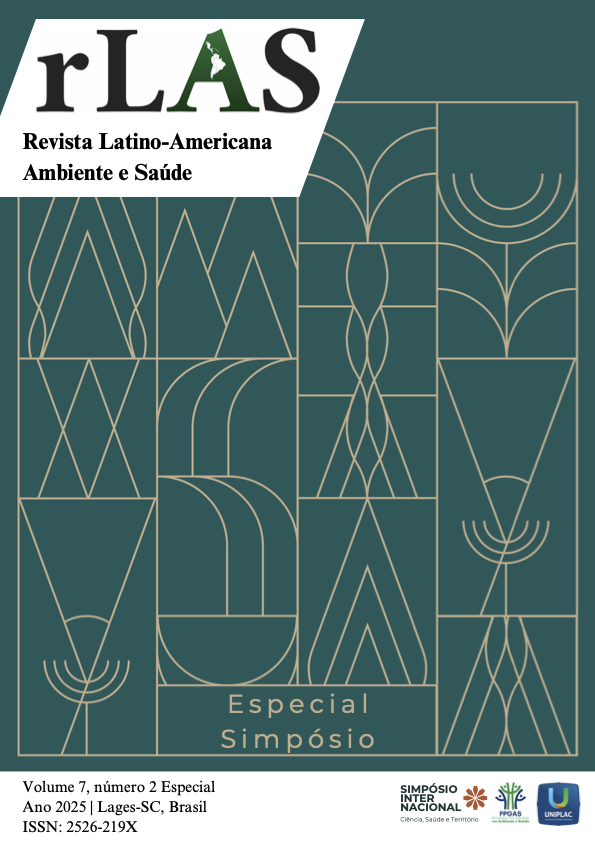Twice exceptionality: autism spectrum disorder and giftedness
Keywords:
twice exceptionality, autism spectrum disorder, high abilities, giftednessAbstract
The increasing prevalence of Autism Spectrum Disorder (ASD) and the complexity of its manifestations, including the coexistence with High Abilities/Giftedness (HA/GD) in the so-called double exceptionality, demand in-depth investigations. This study aimed to understand the interrelationships between ASD and HA/GD through a systematic review of the literature, using the PubMed, PeriodicoCapes, ScienceDirect and Scielo databases, with a time frame of the last ten years and following the PRISMA protocol. Sixty-six articles were analyzed, which addressed characteristics, diagnostic and identification challenges, including the problem of false diagnosis and the phenomenon of masking, where the traits of one condition can hide or exacerbate those of the other. The results corroborate the phenotypic heterogeneity of ASD and the diversity of HA/GD, resulting in asymmetric development profiles that challenge generalizations and the adequacy of traditional diagnostic instruments. The analysis of the scientific production revealed the need for more applied research to validate intervention models and develop identification tools sensitive to this population. It is concluded that the dual exceptionality of ASD/AH/SD is a field that requires greater clarity in diagnostic criteria and personalized interventions, based on individual strengths, to promote the full development and well-being of these individuals.
References
APA American Psychiatric Association. Diagnostic and Statistical Manual of Mental Disorders (5th ed., text rev.; DSM-5-TR). American Psychiatric Publishing.2022.
APA American Psychiatric Association. Manual diagnóstico e estatístico de transtornos mentais: texto revisado (DSM-IV-TR). Washington: Artmed; 2002.
BAUM, S. M.; SCHADER, R. M.; OWEN, S. V. To be gifted and learning disabled: Strength-based strategies for helping twice-exceptional students with LD, ADHD, ASD, and more. 3. ed. Waco, TX: Prufrock Press, 2017.
BEAUCHAINE, T. P. Dimensional models of psychopathology are essential for improving classification, assessment, and intervention. Clinical Psychology: Science and Practice. Advance online publication. 2023.
BLUMBERG, S. J. et al. Diagnosis lost: differences between children who had and who currently have an autism spectrum disorder diagnosis. Autism: The International Journal of Research and Practice, v.20, n.7, p.783–795, 2016.
CAMELO, F. M. et al. Diagnóstico e tratamento do transtorno do espectro autista. Revista Científica Multidisciplinar, v. 3, n. 7, p. e371619-e371619, 2022.
GAGNÉ, F. My convictions about the nature of abilities, gifts, and talents. Journal for the Education of the Gifted, v. 22, n. 2, p. 109-136, 1999.
GESCHWIND, D. H.; LEVITT, P. Autism spectrum disorders: developmental disconnection syndromes. Current Opinion in Neurobiology, v. 17, n. 1, p. 103-111, fev. 2007. DOI: 10.1016/j.conb.2007.01.009.
HULL, L. et al. “Putting on My Best Normal”: Social camouflaging in adults with autism spectrum conditions. Journal of Autism and Developmental Disorders, v. 47, n. 8, p. 2519-2534, 2017.
KAMP BECKER, I. Autism spectrum disorder in ICD-11—a critical reflection of its possible impact on clinical practice and research. Molecular Psychiatry, v.29, p.633–638, 2024.
KENTROU, V. et al. Perceived misdiagnosis of psychiatric conditions in autistic adults. Clinical Medicine, v. 71, p. 102586, 2024.
LEBEAU, B. et al. Developmental milestones as early indicators of twice-exceptionality. Neurobiology of Learning and Memory, v. 194, p. 107671, 2022.
LORD, C.; ELSABBAGH, M.; BAIRD, G.; VORTERA, S. Autism spectrum disorder. The Lancet, v. 392, n. 10146, p. 508-520, 2018. DOI: 10.1016/S0140-6736(18)31129-2.
LOVECKY, D. V. Different minds: gifted children with AD/HD, Asperger syndrome, and other learning deficits. London: Jessica Kingsley Publishers, 2004.
MAENNER, M. J. et al. Prevalence and Characteristics of Autism Spectrum Disorder Among Children Aged 8 Years — Autism and Developmental Disabilities Monitoring Network, 11 Sites, United States, 2020. MMWR Surveillance Summaries, v. 72, n. 2, p. 1–14, 2023.
NEIHART, M. The impact of giftedness on psychological well-being: what does the empirical literature say? Roeper Review, v. 22, n. 1, p. 10-17, 2000.
PAGE, M. J. et al. PRISMA 2020 explanation and elaboration: updated guidance and exemplars for reporting systematic reviews. BMJ, v. 372, n. 160, mar. 2021. DOI: 10.1136/bmj.n160.
PFEIFFER, S. I. Serving the gifted: evidence-based clinical and psychoeducational practice. New York: Routledge, 2013.
RENZULLI, J. S. O que é esta coisa chamada Superdotação e como a desenvolvemos? Uma retrospectiva de vinte e cinco anos. Educação, v.1, n.52, p.75 – 131, 1978.
WEBB, J. T. et al. Diagnóstico equivocado e duplo diagnóstico de crianças superdotadas e adultos: TDAH, Bipolar, TOC, Autismo, Depressão e Transtornos de Ansiedade. Tradução de Valéria G. de Souza. Belo Horizonte: Artesã, 2016.
WORLD HEALTH ORGANIZATION. International Statistical Classification of Diseases and Related Health Problems 11. ed. Genebra: OMS, 2019.
ZAIA, P. et al. Twice exceptionality and giftedness under the view of positive psychology. Psicologia, Saúde & Doença, v. 22, n. 1, p. 62–75, 2021. https://doi.org/10.15309/21psd220107.


